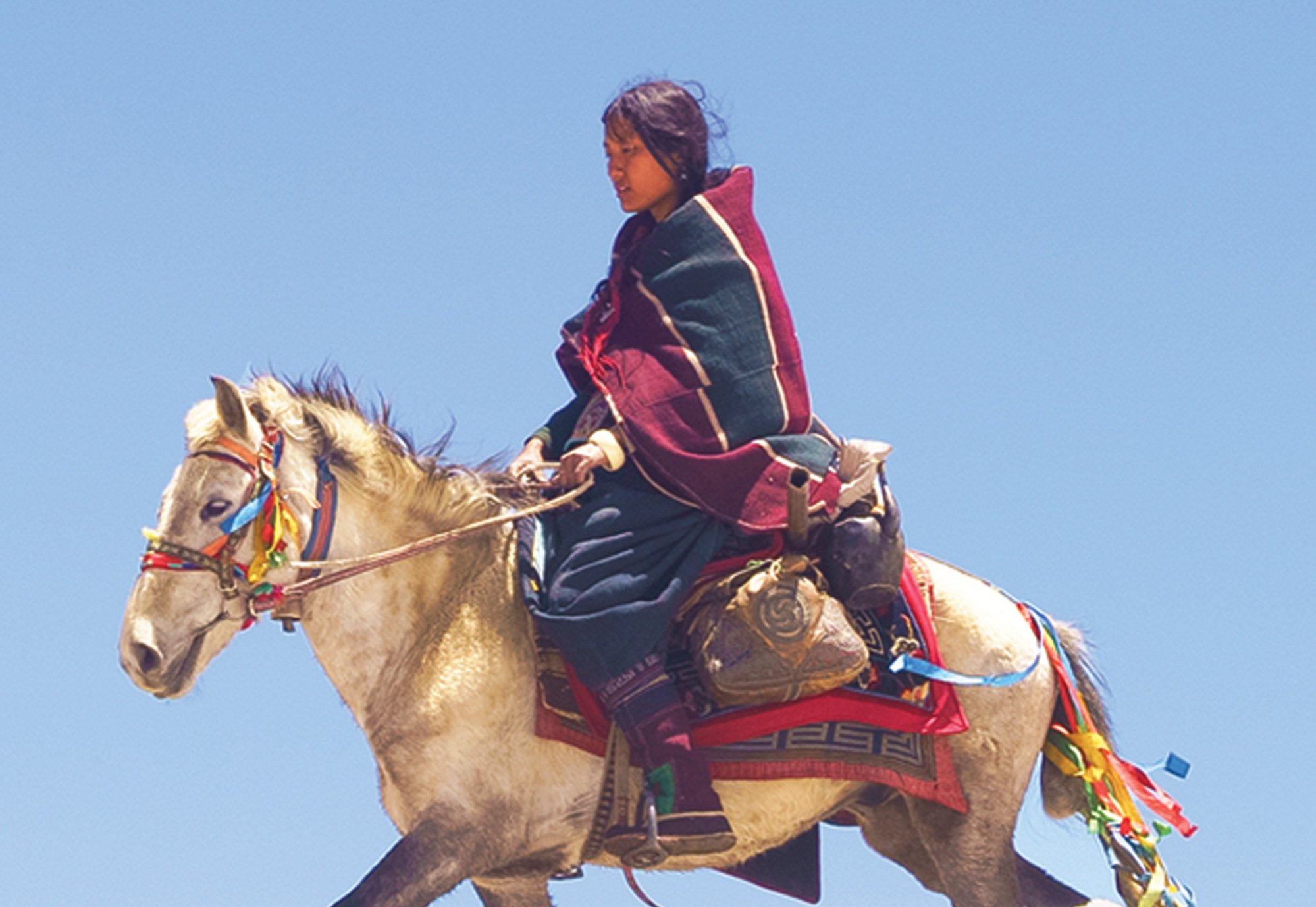Nepali film set to make history at Berlin International Film Festival: ‘our cinema is ready to compete’
[ad_1]
“It’s a huge achievement for me and Nepali cinema,” Bham told This Week in Asia. “The film is the culmination of my reflections and curiosity – about spirituality, reincarnation and polyandry, a culture I saw while growing up in Mugu [northwest Nepal].”
Featuring dialogue in Nepali and Tibetan languages, Shambhala offers a window into the life and culture of the remote mountain areas, which Bham said aligns with his values as a both a filmmaker and a student of anthropology. He said it was important to tell the stories of local and indigenous communities as authentically as possible.
In the past decade, many independent filmmakers in Nepal have attempted to capture stories from non-urban settings, piquing the interests of both local and foreign audiences and setting them apart from formulas copied from commercial Hindi films. A new league of filmmakers, including Tsering Rhitar Sherpa, Deepak Rauniyar and Nabin Subba, have offered audiences films with true-to-life characters and stories while introducing Nepali cinema to international festival circuits.

Sherpa’s film Mukundo (2000), which features a spiritual healer as its central character, was one of the first Nepali films to tour internationally at film festivals. Rauniyar’s Highway (2012), depicting a bus journey during the frequent general strikes of the time, was screened at the Berlin Film Festival that year, while his next film, White Sun (2016), set against the backdrop of Nepal’s civil war, premiered at the Venice Film Festival.
Sherpa said most Nepali films in international festivals have been independent productions and showcase the industry’s potential. He added that though they “validate our capacity to produce remarkable cinema”, the industry needs to be guided by long term vision, as well as financial and policy support from the state, to continue to gain broader recognition.
“Our cinema is ready to compete with the best of international cinema,” Sherpa told This Week in Asia. “However, to maintain a strong presence globally, we require significant investment and promotion … creating quality cinema involves huge risk, given the high costs and time required for production, making it very challenging for individuals or private companies to carry out alone.”
Hong Kong rapper channels pain of injustice into hip hop with ‘big didi energy’
Hong Kong rapper channels pain of injustice into hip hop with ‘big didi energy’
Many filmmakers said access to funding and good box office returns pose challenges. Despite a growing number of multiplexes, the country’s entertainment sector is still dominated by Hindi films, with Nepali films rarely being screened for more than a few weeks.
Meanwhile, audiences have complained that many Nepali films, especially commercial ones, lack originality and perpetuate archaic beliefs.
A report released in 2020 by non-profit Plan International Nepal and Docskool, a local space for filmmakers, found many Nepali films “can be seen as a foremost carrier of constrictive taboos based on ethnicity”. It also said that mainstream Nepali films still portray stereotypical and restrictive representations of women, a trend that has continued since the country’s first feature film, Aama, was released in 1964 and focused on women in domestic spaces.
Remembering the ‘collective experience of women’ in Nepal’s feminist movement
Remembering the ‘collective experience of women’ in Nepal’s feminist movement
But Bham said he is part of a new generation of filmmakers trying to break away from that trend. He said Shambhala is a film from a women’s point of view and an exploration of his own feminine energy – emotionally and spiritually.
“I tell the story from a women’s perspective because they’re the backbone of many mountain communities,” he said. “Men are often travelling for work, so it is the women who are taking care of the household and also the traditions and culture.”
Nepali films such as Shambhala are “breaking boundaries” and introducing Nepali cinema to global audiences, said Abhimanyu Dixit, a filmmaker and educator. He said the Nepali film industry has been growing at a “gradual pace” and there has been growing film literacy among audiences, too.
“When these films are screened at international film festivals, they will not just get audiences but also attract distributors, and there are more chances of getting worldwide release,” Dixit told This Week in Asia.
What’s needed now is active involvement from the government in fostering the growth of Nepali cinema and a shared sense of ownership
Sherpa also said there has been a big shift in how people understand and appreciate films, and the “level of cinema literacy has taken a significant leap, especially among the younger generation”.
“This shift is encouraging and means we can now create films that connect with both local and international viewers,” he said. “What’s needed now is active involvement from the government in fostering the growth of Nepali cinema and a shared sense of ownership.”
The recent success of Nepali films at international film festivals is a testament to that.
In 2022, writer and director Abinash Bikram Shah’s Lori (Melancholy of My Mother’s Lullabies) won the Short Film Special Distinction at the Cannes Film Festival. Last year, Fidel Devkota’s The Red Suitcase, which follows a driver delivering a parcel from Kathmandu to a mountainous village, premiered at the Venice Film Festival while Subba’s A Road to a Village screened at the Toronto International Film Festival.
Bham’s success this year adds to the list of achievements for independent Nepali cinema and for the filmmaker himself, whose 2015 film Kalo Pothi won a prize at the Critics’ Week of that year’s Venice Film Festival.
“I’m very hopeful about Nepali cinema,” he said. “Looking at the momentum and the young filmmakers, it seems like this is the right time for Nepali cinema.”
[ad_2]
Source link


 Bonuses for new players
Bonuses for new players